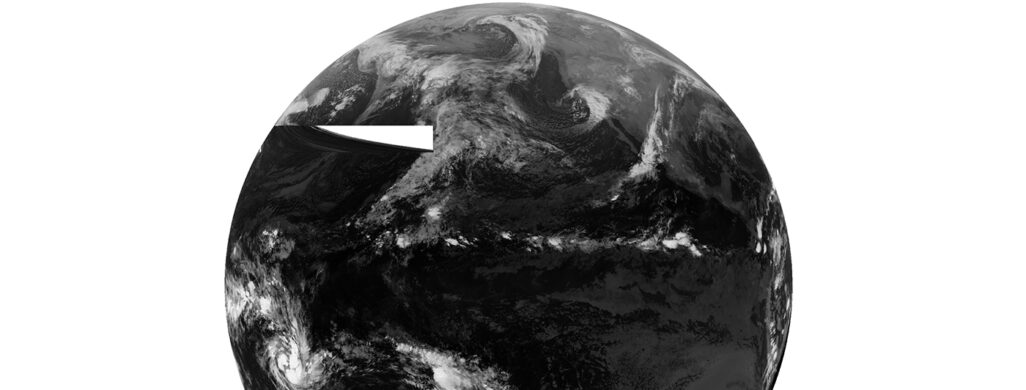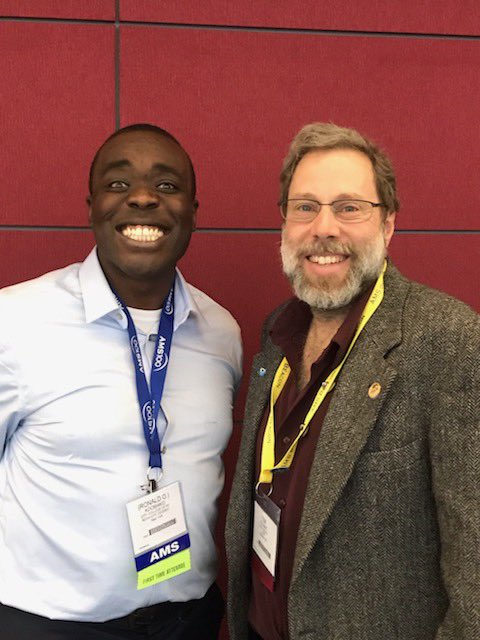Shark fins and internships – Solving real world problems through mentorship
Ronald Adomako is looking for “shark fins,” but not necessarily in the ocean; he is looking at GOES-16 and -17 images for artifacts that are not supposed to be there.
Adomako, a master’s student from City College of New York in the Center for Earth System Sciences and Remote Sensing Technologies, completed a 12-week internship with NOAA scientist Tim Schmit, who is based at the University of Wisconsin–Madison Cooperative Institute for Meteorological Satellite Studies.

Through his project, Adomako automated the identification of “shark fins,” so called because of their shape, in GOES-16 and -17 Advanced Baseline Imager data using machine learning. Shark fins are errors that emerge due to a processing anomaly. This tool will eventually be able detect these artifacts without human intervention and help fix the anomalies.

Credit: Mathew Gunshor
GOES-16 and -17 transmit thousands of images per day back to Earth, so automating the error detection process is an important time-saving technique. Scientists using large datasets will benefit from the program’s ability to ignore the shark fin anomalies in the future, without affecting the analysis of the dataset.
By flagging these anomalies it increases the accuracy of the data, while ensuring the public is viewing accurate weather data.
“Since GOES-16 and -17 data are open source, I’m motivated to ensure these data make sense to the public,” says Adomako. “I strive to make my projects and presentations understandable to a wide audience.”
Adomako’s passion for science extends to mentoring high school students interested in following science, technology, engineering, mathematics careers. In addition, he promotes open access to data by publishing his code for others to use and learn.
The NOAA Experiential Research and Training Opportunities internship provides NOAA Cooperative Science Center funded research fellows opportunities to work alongside a NOAA scientist. Masters and Ph.D. students gain hands on experience learning about the NOAA mission while completing a research project in “science, technology, engineering, mathematics, policy, natural resource management, or social science.”
Now that the internship is completed, Adomako and Schmit intend to publish about this work. Schmit is also encouraging Adomako to teach other CIMSS researchers about the benefits of the shark fin detection tool so that they can adapt the technique to identify and predict other types of artifacts.
“It’s always fun working with students,” says Schmit. “Adomako has taught our team valuable new skills in machine learning and even taught us how to use Slack.”
Adomako finished his last semester of his master’s program and is considering a Ph.D. in hopes of becoming an astronaut in the future.
This work is supported by NOAA.
